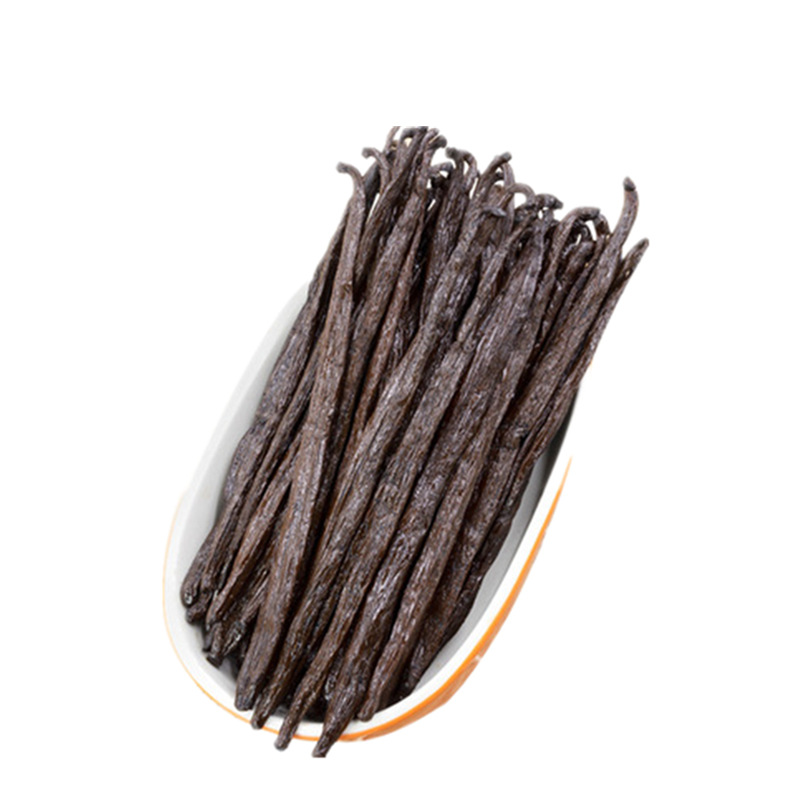Overview:A vanilla bean is the fruit of the vanilla orchid (Vanilla planifolia). It is a highly valued spice known for its rich, aromatic flavor and is commonly used in both sweet and savory dishes.

Characteristics:
Appearance: Long, slender, dark brown to black pods with a wrinkled texture.
Flavor: Intense, sweet, and creamy with complex floral notes.
Aroma: Rich and fragrant, often associated with warmth and comfort.
Extracting Flavor:
Split the Pod: Use a sharp knife to split the vanilla bean lengthwise. This exposes the tiny seeds inside.
Scrape the Seeds: Use the back of the knife to scrape out the seeds. Both the seeds and the pod can be used for flavor.
Infusing:
In Liquids: Add the split pod and scraped seeds to milk, cream, or other liquids. Heat gently to infuse the flavor, then remove the pod before using.
In Syrups: Combine with sugar and water to create vanilla syrup for sweetening drinks or desserts.
Baking:
In Cakes and Cookies: Add the seeds to batters for cakes, cookies, and muffins for a rich vanilla flavor.
In Custards and Puddings: Use in custards, ice creams, and puddings for depth of flavor.
Savory Dishes:
In Sauces and Marinades: Incorporate vanilla into sauces for meats or marinades for a unique flavor twist.
Storing:
Keep Fresh: Store unused vanilla beans in an airtight container in a cool, dark place. They can last for several months when stored properly.
Substitution: If you don’t have vanilla beans, you can substitute with pure vanilla extract. Generally, 1 vanilla bean is equivalent to about 1-2 teaspoons of vanilla extract.
Cost: Vanilla beans can be expensive, so consider using them in recipes where their flavor can shine, such as in custards or ice creams.
Using whole vanilla beans can elevate your dishes with a more complex flavor compared to extracts, making them a favorite among chefs and bakers.